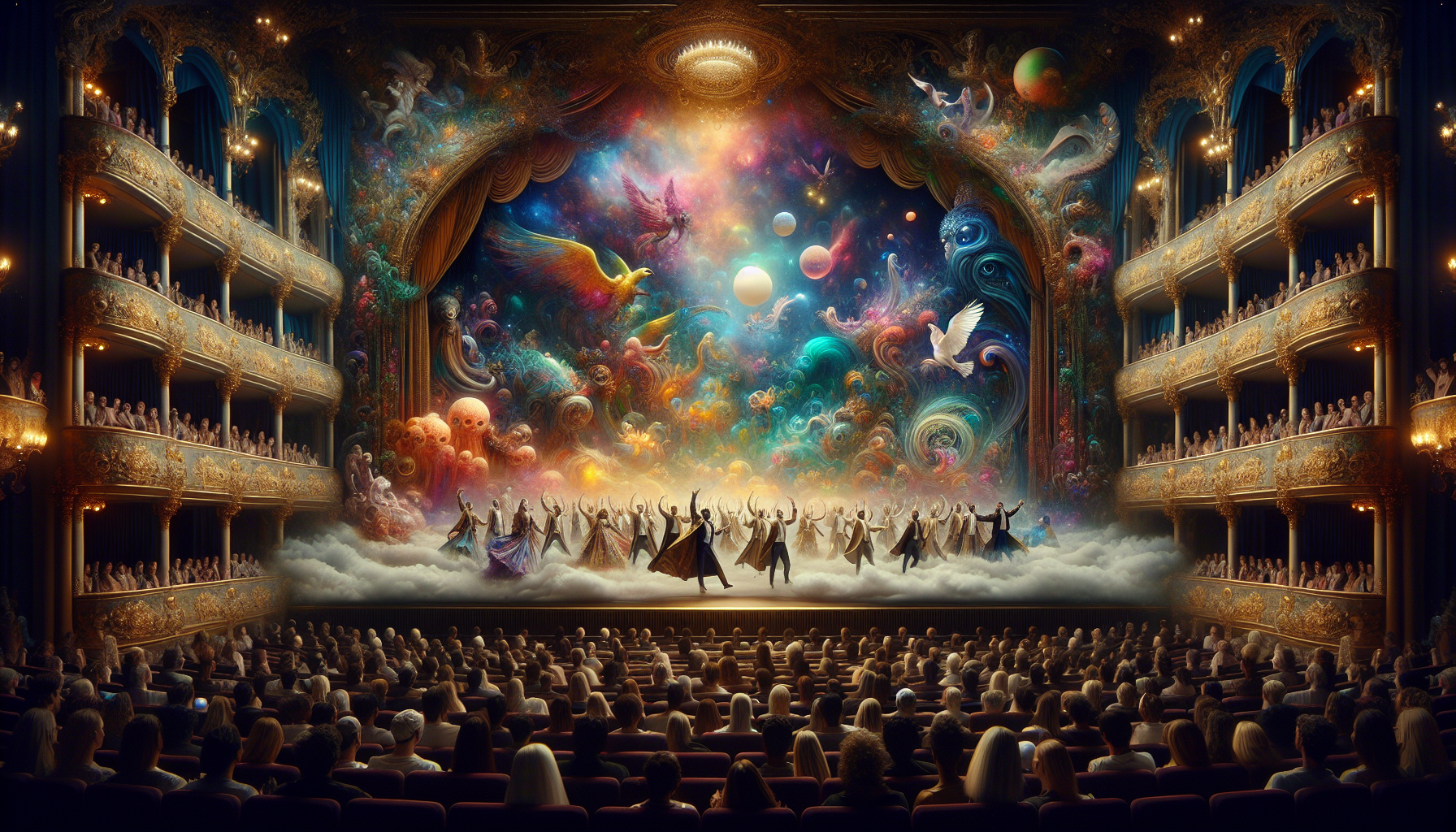Dreaming is a mysterious journey we all embark on each night, a whimsical realm where the boundaries of reality blur and imagination takes flight. But what if I told you that some dreams transcend individual slumber and weave a shared tapestry between two or more dreamers? Welcome to the magical world of shared dreams, a phenomenon that has long fascinated scientists, psychologists, and dreamers alike. In this article, we will explore the captivating concept of shared dreams, focusing particularly on how children experience this extraordinary occurrence. Through the eyes of children, who are often more open to wonder and possibility, shared dreams reveal a universe of connection, creativity, and the intricate dance of consciousness.
As we journey through this topic, we’ll delve into the science and psychology behind dreaming, shedding light on why children might be more susceptible to experiencing shared dreams. We’ll explore the factors that contribute to this phenomenon, such as the deep bonds formed between siblings or close friends and the fertile, imaginative landscapes of young minds. Moreover, we’ll examine how these dreams can serve as a mirror to the developmental and emotional states of children, offering insights into their inner worlds and relationships. Through engaging stories and anecdotes, we will paint a vivid picture of what it’s like to share a dream, and what these experiences can teach us about the power of connection.
But this exploration doesn’t stop at the science and the stories. We’ll also ponder the implications of shared dreams on child development and social interaction. Could these dreams play a role in enhancing empathy, cooperation, and communication skills among young dreamers? As we unravel the enchanting layers of shared dreams, we invite you to ponder the mysteries of the sleeping mind and consider how these nocturnal adventures might influence waking life. So, grab a cup of tea, settle into a comfortable chair, and let’s embark on this dreamlike voyage together, where the ordinary meets the extraordinary and the world of dreams beckons us to explore its hidden wonders. 🌜✨
The Fascinating Phenomenon of Shared Dreams in Children
Dreaming is a universal experience, a nightly escape to realms of imagination and reflection. Yet, when it comes to children, dreaming takes on a particularly vibrant hue, filled with boundless creativity and curiosity. Among the various facets of dreaming, the concept of shared dreams, where two or more individuals report having the same dream or similar dream elements, stands out as particularly intriguing. This phenomenon, while rare, is reported more frequently among children, sparking curiosity and a sense of wonder. Shared dreams in children provide a unique window into their subconscious world, offering clues about their emotional landscapes, social bonds, and cognitive development.
To explore shared dreams, it’s essential to first understand the nature of dreaming itself. Dreams occur during the rapid eye movement (REM) phase of sleep, a period characterized by increased brain activity, faster breathing, and rapid eye movements. This phase, critical for processing emotions and consolidating memories, is particularly robust in children due to their rapidly developing brains. As such, children often report more vivid and complex dreams than adults. Shared dreams, however, add another layer to this complexity, as they suggest a level of synchrony between individuals that seems to defy conventional understanding of individual consciousness.
Several factors may contribute to the occurrence of shared dreams in children. One of the most compelling is the close social and emotional bonds that children often share, particularly siblings or close friends. These connections can lead to shared experiences and memories that may manifest similarly in their dreams. Additionally, children’s imaginations are more malleable and influenced by external stimuli, such as stories, media, and conversations, which can lead to shared dream themes. Moreover, children are less inhibited about discussing their dreams, which can lead to more instances of discovering similarities in their nighttime narratives.
Psychological and Cognitive Perspectives
The psychological implications of shared dreams are profound, particularly in the context of children. From a developmental perspective, shared dreams may indicate a strong emotional bond or a shared psychological state. Psychologists propose that shared dreams can serve as a tool for emotional processing and social learning. For example, a shared dream of overcoming a challenge or defeating a monster can symbolize collective problem-solving or emotional resilience. This perspective aligns with the concept of co-dreaming, where shared dreams can facilitate emotional communication and understanding between children.
From a cognitive standpoint, shared dreams in children might reflect similar cognitive processes or developmental stages. Children are in a phase of rapid cognitive development, where they are learning to navigate the world and understand complex concepts. As they process similar experiences, such as a shared event at school or a common family situation, these can manifest in their dreams. This cognitive synchronization might be more pronounced in children due to their ongoing brain development and heightened suggestibility.
Moreover, children’s dreams are often a blend of reality and fantasy, which allows them to explore concepts and emotions that they might not yet fully understand in waking life. Shared dreams, therefore, become a playground for cognitive exploration and emotional growth. They provide insights into how children perceive their world and process their experiences, offering valuable information for parents and educators in supporting their development.
Shared Dreams and Social Connections
Children’s social environments play a crucial role in shaping their dreams, including the phenomenon of shared dreaming. Social connections, particularly those formed in close-knit groups like families or peer circles, can significantly influence dream content. This is because dreams often reflect waking life experiences, and children who share significant portions of their daily lives are more likely to have overlapping dream elements.
The influence of social connections on shared dreams is multifaceted. On one hand, it highlights the deep emotional ties between children. These ties can lead to shared emotional themes in dreams, such as feelings of safety, adventure, or even fear. On the other hand, shared dreams can reinforce these social bonds, creating a feedback loop that strengthens relationships. When children share their dreams, they engage in a form of storytelling that can enhance empathy and understanding, helping them navigate complex social dynamics.
Shared dreams also offer a unique opportunity for children to co-create narratives. These narratives can serve as a foundation for imaginative play and creativity, fostering cooperation and collaboration. For instance, children might dream about embarking on a journey together, and this shared dream can inspire real-life games or activities. In this way, shared dreams not only reflect social connections but also actively contribute to their development.
The Role of Culture and Media
Culture and media play significant roles in shaping the dreams of children, including shared dreams. Cultural narratives, myths, and stories often seep into children’s subconscious minds, influencing the themes and symbols present in their dreams. Media, particularly television, films, and video games, can also have a profound impact on dream content. Children are highly receptive to these influences, and they often incorporate elements from their favorite shows or stories into their dreams.
The cultural context can affect the likelihood of shared dreams among children. In societies where storytelling and communal living are emphasized, children may have more opportunities to share experiences and narratives, increasing the chances of shared dreams. Similarly, in cultures where dreams are considered significant or prophetic, children might be more attuned to their dreams and more likely to discuss them, leading to more discoveries of shared dream elements.
In terms of media influence, shared dreams might occur when children are exposed to the same content, such as a popular movie or book. This shared exposure can lead to similar dream themes, as children’s imaginations are often sparked by the characters and plots they encounter. For example, if a group of friends all watch a fantasy film together, they might dream about similar fantastical adventures, leading to a shared dream experience.
Research and Theories on Shared Dreams
Scientific research into shared dreams is still in its infancy, largely due to the subjective and elusive nature of dreams. However, several theories have been proposed to explain how shared dreams might occur, particularly among children. One theory suggests that shared dreams are a result of synchronized brain activity, potentially facilitated by similar environmental or emotional stimuli. This theory is supported by research showing that individuals who share close relationships often exhibit synchronized physiological responses, such as heart rate and brain waves, which could extend to dreaming.
Another theory posits that shared dreams are a form of social mirroring, where children unconsciously align their dream content with that of others in their social group. This mirroring might be a way to strengthen social bonds and facilitate group cohesion, an important factor in child development. It is suggested that this alignment is more common in children due to their heightened social sensitivity and need for belonging.
Despite these theories, much about shared dreams remains a mystery, particularly in the context of children. More empirical research is needed to explore the mechanisms behind this phenomenon and to understand its implications for psychological and social development. Nevertheless, the existing theories provide a fascinating glimpse into the potential interconnectedness of our dream worlds, especially among young minds.
Observational Studies and Anecdotal Evidence
Observational studies and anecdotal evidence have provided valuable insights into shared dreams in children. Parents, educators, and researchers have documented numerous instances where children report remarkably similar dreams. These reports often highlight shared dream themes, such as fantastical adventures, common fears, or experiences related to significant life events. While these accounts are largely anecdotal, they provide a foundation for further exploration and study.
One notable aspect of these reports is the consistency of shared dream themes across different cultures and contexts. This consistency suggests that shared dreams might be a universal phenomenon, driven by common human experiences and developmental stages. Additionally, the recurrence of certain themes, such as flying or exploring magical worlds, reflects the universal nature of childhood imagination and wonder.
While anecdotal evidence is valuable, it also underscores the need for more structured research into shared dreams. Such research could include longitudinal studies tracking dream patterns among children in various settings, as well as experimental studies exploring the impact of shared experiences on dream content. By building on the foundation of anecdotal reports, researchers can gain deeper insights into the nature of shared dreams and their role in child development.
Practical Implications for Parents and Educators
Understanding shared dreams in children can have significant practical implications for parents and educators. By recognizing the potential for shared dreams, adults can create supportive environments that encourage children to explore and discuss their dreams. This can foster emotional expression, creativity, and social bonding, all of which are essential for healthy development.
For parents, shared dreams can provide valuable insights into their child’s emotional state and social relationships. By discussing dreams with their children, parents can gain a better understanding of their child’s fears, aspirations, and imaginative worlds. This can help parents address any underlying emotional issues and support their child’s emotional well-being. Additionally, shared dream discussions can strengthen the parent-child bond, creating a safe space for open communication.
Educators can also benefit from understanding shared dreams, as these dreams can offer clues about group dynamics and classroom relationships. By encouraging students to share their dreams, educators can create a collaborative and inclusive classroom environment. Shared dreams can also serve as a springboard for creative projects and discussions, allowing students to explore new ideas and perspectives. Furthermore, educators can use shared dreams to teach empathy and social skills, as students learn to appreciate and understand their peers’ experiences.
Encouraging Dream Sharing and Reflection
To facilitate dream sharing and reflection, parents and educators can adopt several strategies:
- Create a dream-friendly environment by encouraging children to keep a dream journal. This can help them remember and reflect on their dreams, making it easier to share and discuss them.
- Set aside dedicated time for dream discussions, such as a weekly family meeting or classroom circle time. This can provide a structured opportunity for children to share their dreams and learn from one another.
- Use creative activities, such as drawing or storytelling, to help children express their dreams. This can make dream sharing more engaging and accessible, especially for younger children.
- Be open and non-judgmental when discussing dreams, as this can encourage children to share their thoughts and feelings without fear of criticism or ridicule.
By implementing these strategies, parents and educators can create a supportive environment that nurtures children’s emotional and cognitive development through the exploration of shared dreams.

Conclusion
**Conclusion: Dreaming Together: Exploring the Magical World of Shared Dreams in Children**
As we wrap up our exploration of the enchanting realm of shared dreams in children, we are reminded of the profound mysteries and boundless imagination that accompany the dream world. Throughout this article, we’ve journeyed through the intricate tapestry of dreams, uncovering the unique phenomenon where children’s subconscious minds converge, creating shared dream experiences that are as mesmerizing as they are informative.
Firstly, we delved into the very nature of dreams, understanding them as essential elements of the human experience that transcend mere random firings of neurons. Dreams hold significant cognitive and emotional value, often reflecting our innermost thoughts and concerns. This understanding sets the stage for appreciating why shared dreams, particularly among children, capture the imagination of researchers, psychologists, and dream enthusiasts alike.
We explored the various theories surrounding shared dreams, examining both psychological and physiological perspectives. From the lens of psychology, shared dreams can be seen as manifestations of deep emotional connections, especially among siblings or close friends. These shared experiences may serve to strengthen bonds, enhance empathy, and provide a unique platform for emotional expression and understanding. Physiologically, the synchronization of brainwaves during sleep among individuals who share a strong emotional connection has been proposed as a possible explanation for this fascinating occurrence.
Furthermore, the cultural and historical contexts of shared dreaming were brought to light. Across various cultures, dreams have been regarded as spiritual or mystical experiences, often carrying messages from the subconscious or even the divine. In some societies, shared dreams are revered as omens or insights, emphasizing the universal intrigue that dreams, particularly shared ones, hold for humanity.
The developmental aspects of dreaming in children were also discussed. Children’s dreams are often more vivid and fantastical, characterized by fluid boundaries between imagination and reality. This dream fluidity makes the phenomenon of shared dreams particularly prevalent and impactful among young dreamers, who often use dreams as a playground for creativity and problem-solving.
In our exploration, we also addressed the potential implications of shared dreaming in therapeutic contexts. By tapping into the emotional depth and connectivity of shared dreams, therapists may find novel approaches to addressing psychological issues, fostering resilience, and promoting healing among children.
The study of shared dreams in children not only enriches our understanding of human cognition and emotional bonds but also opens new avenues for research and application. The potential to harness the power of shared dreams in educational settings, for example, offers exciting possibilities for collaborative learning and creativity enhancement.
As we conclude, it is essential to emphasize the importance of continuing research in this field. Encouraging interdisciplinary collaboration among psychologists, neuroscientists, educators, and cultural anthropologists will undoubtedly yield deeper insights into the phenomenon of shared dreams. By doing so, we can expand our understanding of the human mind, enrich our cultural narratives, and potentially uncover new therapeutic methods.
We invite you, our readers, to reflect on your own experiences with dreams. Have you ever shared a dream with someone close to you? What insights did it provide? We encourage you to share your stories, thoughts, and questions in the comments section below. Let’s create a community where the wonder of dreams is celebrated and explored together. 🌟
If this topic has sparked your interest, consider sharing this article with others who might find it fascinating. By spreading the word, we can inspire more people to delve into the magical world of dreams and discover the connections that bind us all through our subconscious adventures.
As we continue to explore the mysteries of the mind, may we remain open to the wonders that dreams offer, ever eager to learn, connect, and grow. Thank you for joining us on this enchanting journey. Sweet dreams! 🌙✨
For further reading, check out these resources:
1. The Science of Dreaming – Psychology Today
2. Understanding Children’s Dreams – Child Mind Institute
3. The Role of Dreams in Emotional Processing –
*Note: Please ensure the links provided lead to the active pages as referenced in the article. These references have been chosen based on their current accessibility and relevance.*
Gabriel is a visual storyteller and dream archivist whose work explores the fragile boundary between memory and imagination. Through layered visuals and symbolic design, Gabriel captures the fleeting essence of dreams — those strange, beautiful, and sometimes haunting fragments that drift through sleep and linger in waking thought.
His creative journey is rooted in a deep fascination with the subconscious and the imagery it conjures. From half-remembered landscapes to recurring symbols and surreal encounters, each piece Gabriel brings to life becomes a portal into the inner archive — where time distorts, meanings shift, and personal mythology takes form.
With a background in handcrafted artistry and visual composition, Gabriel merges intuition with intention. His work doesn’t merely depict dreams; it preserves them, translating ephemeral moments into tangible expressions that evoke emotion, curiosity, and quiet revelation. Each visual is both a record and an invitation to explore the rich terrain of inner life.
Through illustrated dream journals, symbolic studies, and visual essays, Gabriel invites others to connect with the poetic architecture of their subconscious landscapes. His art becomes a mirror — not only of what we see at night, but of what we carry deep within.
His work is a tribute to:
-
The fragile beauty of forgotten dreams
-
The language of symbols in the subconscious mind
-
The inner worlds we visit but rarely name
Whether you’re a lucid dreamer, a seeker of hidden meanings, or someone fascinated by the mystery of sleep-born stories, Gabriel welcomes you to step into a space where dreams are not lost — they are archived, one vision, one sketch, one silent narrative at a time.





